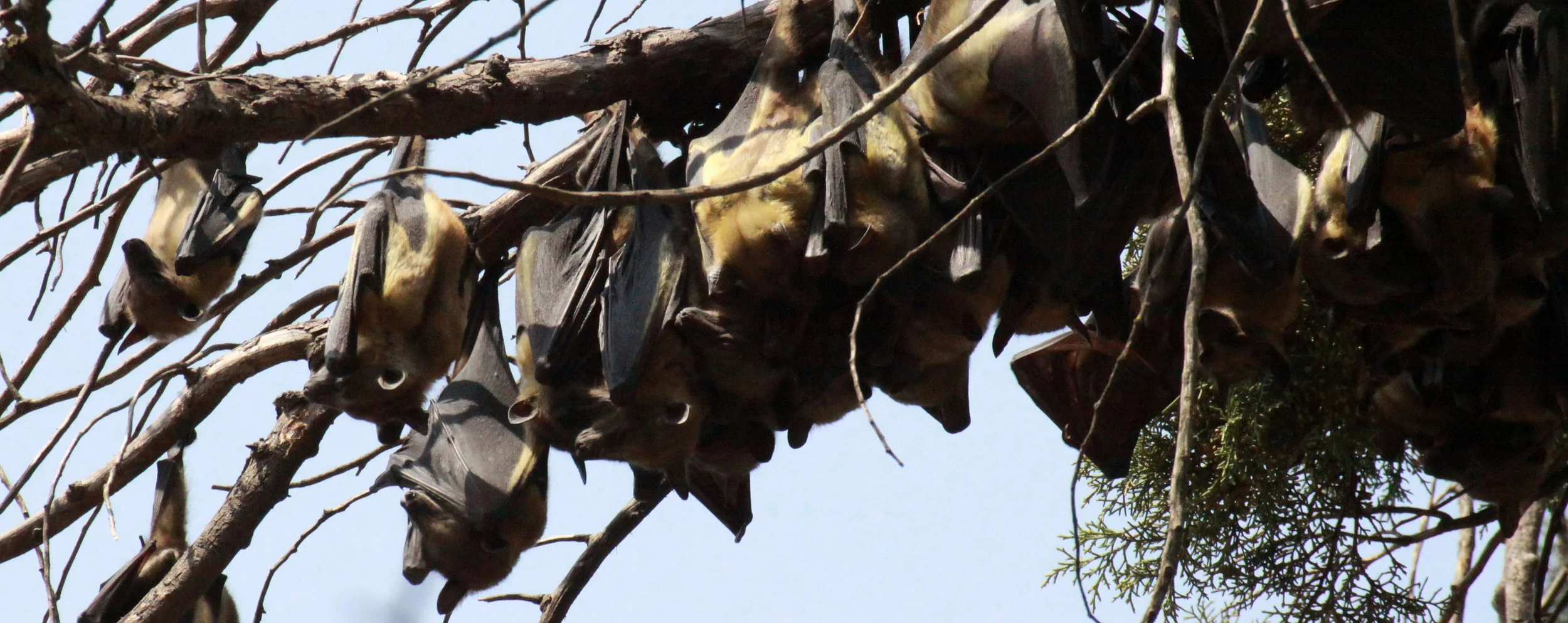
Genus Eidolon
Madagascan fruit bat (Eidolon dupreanum)
Straw-coloured Fruit Bat (Eidolon helvum)
The Madagascan fruit bat (Eidolon dupreanum) is a species of bat in the family Pteropodidae. It is endemic to Madagascar and is listed as "Vulnerable" by the IUCN because it is hunted as bushmeat.
Eidolon dupreanum is named after the Governor of Réunion from 1864 to 1869, Marie Jules Dupré, for the help he gave to scientific researchers. The Madagascan fruit bat is found both around the coastal plain and in the inland high plateau. It has not been recorded in some areas but that is likely to be because it has not been observed rather than that it is absent from these areas. It requires suitable rock fissures and caves in which to roost during the day. Colony size varies between about ten and five hundred individuals.
The Eidolon dupreanum in this gallery were seen in Ankarana National Park in Northern Madagascar














The Straw-coloured Fruit Bat (Eidolon helvum) is a large fruit bat that is the most widely distributed of all the African megabats. It is quite common throughout its area ranging from the southwestern Arabian Peninsula, across forest and savanna zones of sub-Saharan Africa. It is listed as Near Threatened on the IUCN Red List due to a decreasing population trend.
Straw-coloured fruit bats travel in massive colonies of at least 100,000 bats and sometimes massing up to 1 million. From October to end of December every year, in the largest migration of mammals on the planet, up to 10 million straw-coloured fruit bats congregate in Kasanka National Park, Zambia, roosting in a 2 hectare area of Mushitu forest each day. This migration was only discovered in 1980.[2][3] Their necks and backs are a yellowish-brown colour, while their undersides are tawny olive or brownish.
The straw-coloured fruit bat got its name from the silky yellowish or straw colour of its exterior. The wings are black, and the back hair is pale and tawny. Males are generally bright orange and females are usually yellowish. The bats have large cheeks, eyes, and ears. The average weight of these bats ranges from 8 to 12 oz (230 to 340 g) and the animals grow to 5.7 to 9 in (14 to 23 cm) in length, with wings spanning up to 30 in (76 cm). Males are generally larger than females. The bat's heart is very large, and its wings are long and tapered at the tip. The cheeks of the bat are also large and pouch-like.
The Eidolon helvum in this gallery were seen in Kigale Rwanda

















































